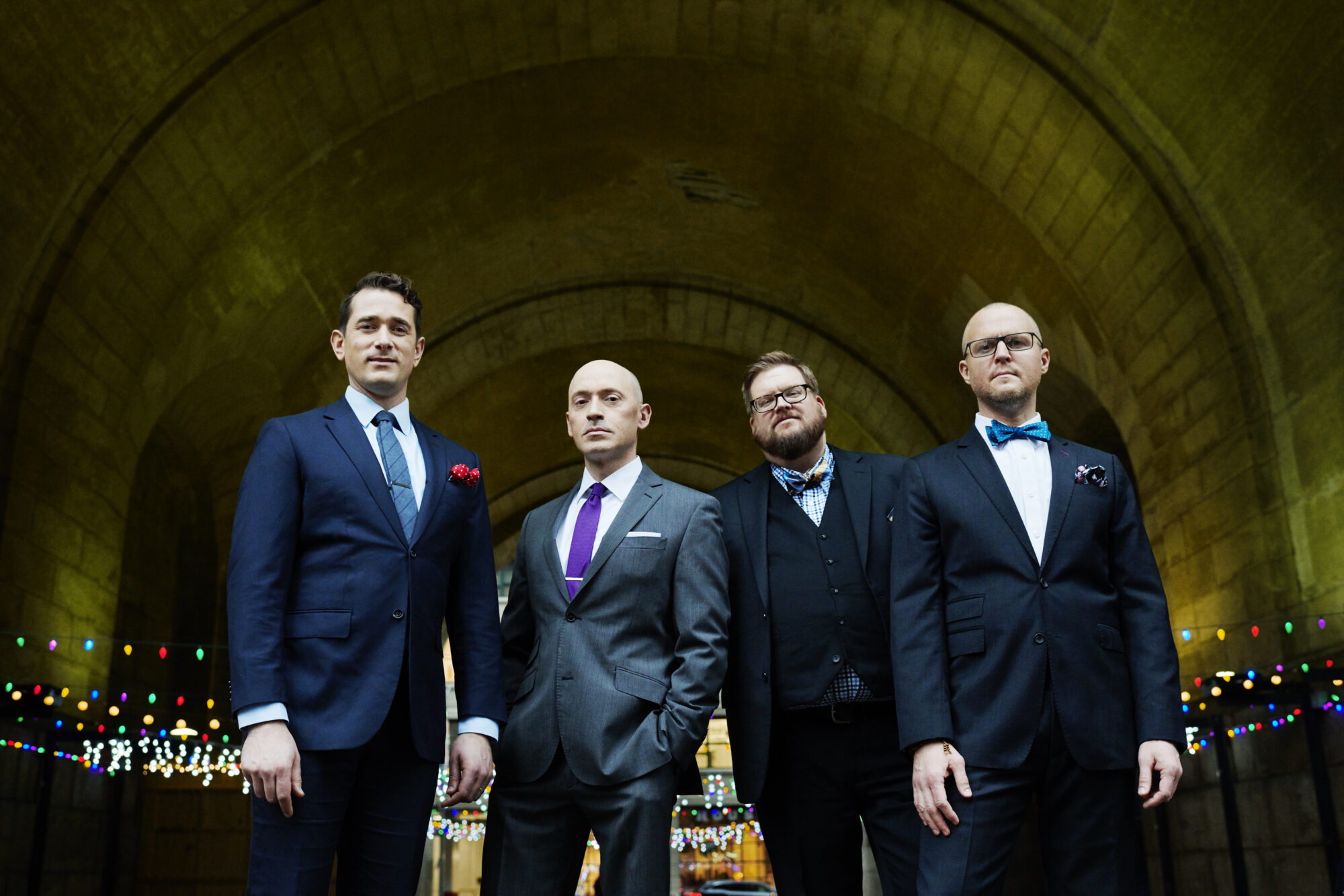Building New York Polyphony has been a labor of love for the artists, including bass baritone Craig Phillips. “It’s been a twelve-year entrepreneurial adventure and has required a lot of care and attention to the business side of things—marketing, budgeting, scheduling, networking, etc.,” Craig says. “It may not sound very exciting, but it’s very satisfying to run our business successfully.”
What also has been satisfying for the group is singing ancient music in beautiful sacred spaces.
“It’s transporting and restorative,” Craig says.
New York Polyphony will bring the ancient to Eugene when the men perform Lenten music from the unique genius of Spanish Renaissance master Peñalosa and his Flemish contemporary Loyset Compère on Thursday, July 11.
Medieval Melodies In Contemporary Settings
Since its founding, New York Polyphony has attempted to move early music into the classical mainstream. The group believes it is too often treated as something “other,” a niche that is more the property of scholars than traditional audiences. This has been exacerbated to a degree by performances of Renaissance works that are dispassionate, antiseptic and overly safe.
“This, we feel, does the music a disservice,” Craig says.
In fact, Renaissance polyphony is brimming with passion.
“It’s achingly beautiful, ecstatic, and profound. It was also written to exploit the power of the human voice!” Craig says.
After years of touring, the men discovered that audiences are so hungry for authentic musical experiences, and their music delivers this.
“It is quintessentially human: there is nothing between the sounds we make and what the listener hears. Four voices intertwined—no amplification, no digital effects, no auto-tune, no pyrotechnics,” Craig says.
Peñalosa and Compère
New York Polyphony has two recording projects in the pipeline. The first, scheduled for release later this year, is a program centered around two never-before-recorded settings of the Lamentations of Jeremiah by the Spanish Renaissance composer Francisco de Peñalosa.
“They are spectacular works by a composer who is sorely underappreciated. We really hope that this disc gets a lot of attention because we are committed to rescuing both settings from the dustbin of history.” Craig says.
The second project is a pairing of a new work composed for New York Polyphony by Norwegian composer Andrew Smith and an obscure motet cycle by the Franco-Flemish Renaissance composer Loyset Compère. Smith’s work is a setting of Psalm 55, and, like many of his compositions, it blurs the lines between early and modern music.
“Smith is inspired by medieval music … so the soundscape he creates is icy and ethereal: simultaneously cutting edge and ancient,” Craig says.
The Compère piece has never been recorded and, like the Peñalosa piece, it is a lost gem. The work is called Officium de Cruce. It was groundbreaking at its time of composition, as a nine-movement cycle that depicts the sequence of events leading up to the crucifixion of Jesus. It was written to enhance a prayer ritual particular to Compère’s patron, Duke Galeazzo Maria Sforza. Sforza read daily from a lavishly illustrated devotional manuscript called The Book of Hours.
“Officium de Cruce was designed to be performed while his patron read—a musical illumination that, paired with the book’s artwork, created a first-of-its-kind multimedia experience,” Craig says.
The group finds it’s an enormous privilege to travel to historic places and sing some of the most exquisite vocal music ever composed.
“It’s an enormous privilege, and we try not to lose sight of that,” Craig says.
Learn more about New York Polyphony.
Explore more captivating concerts at OBF 2019.

